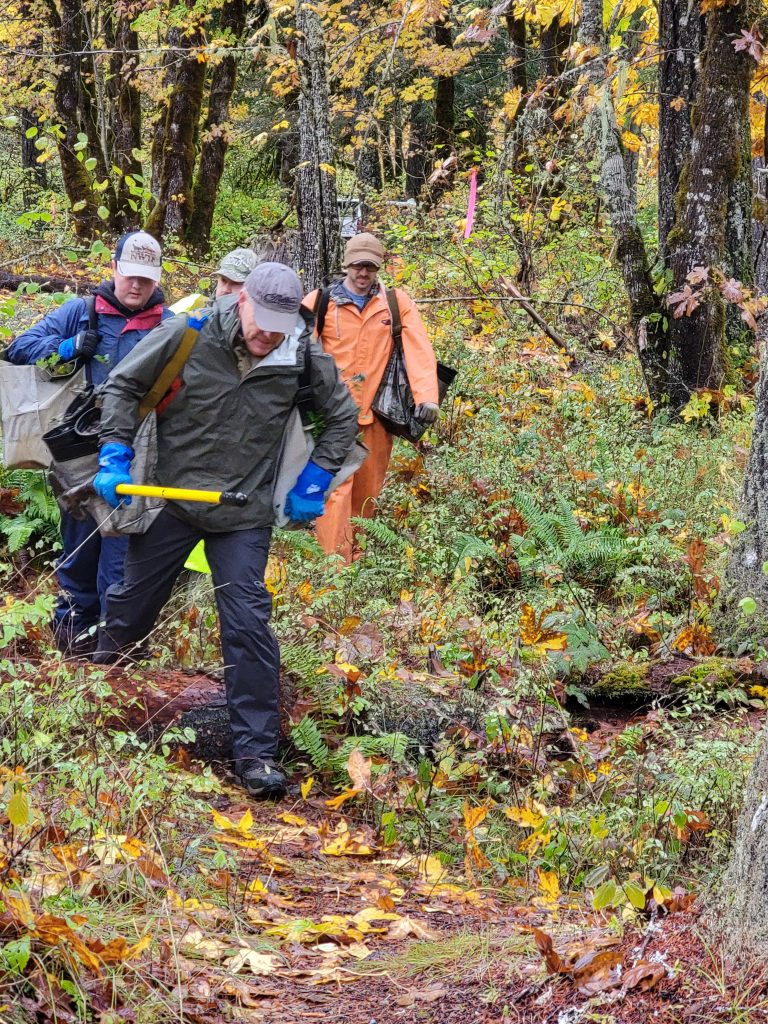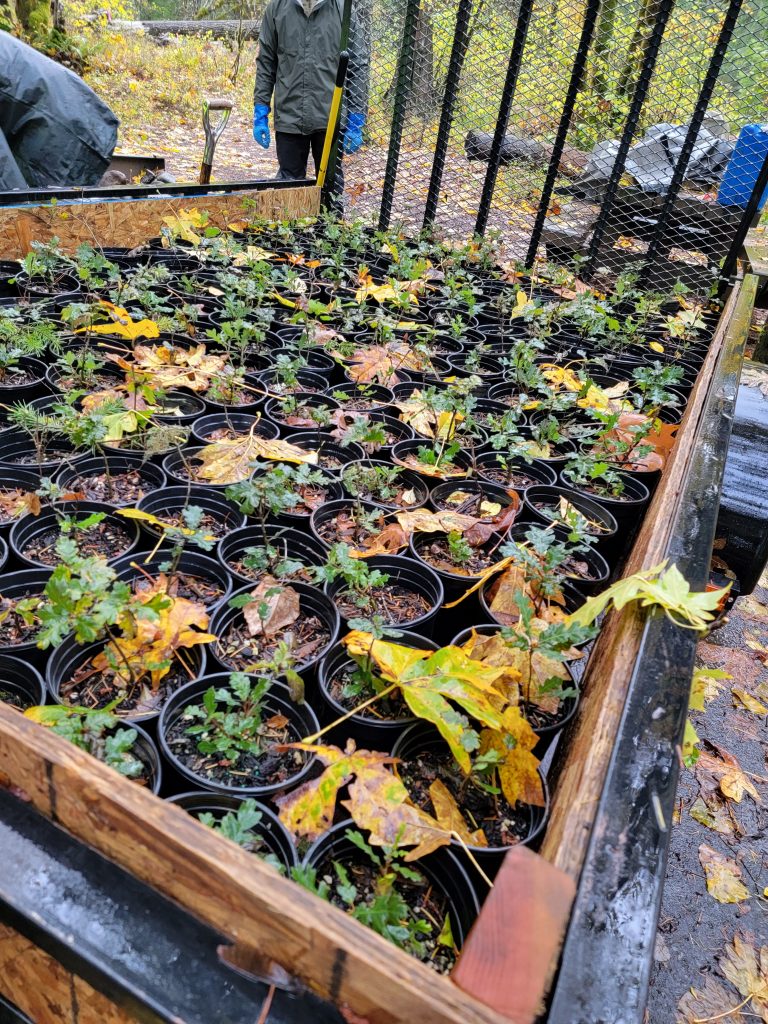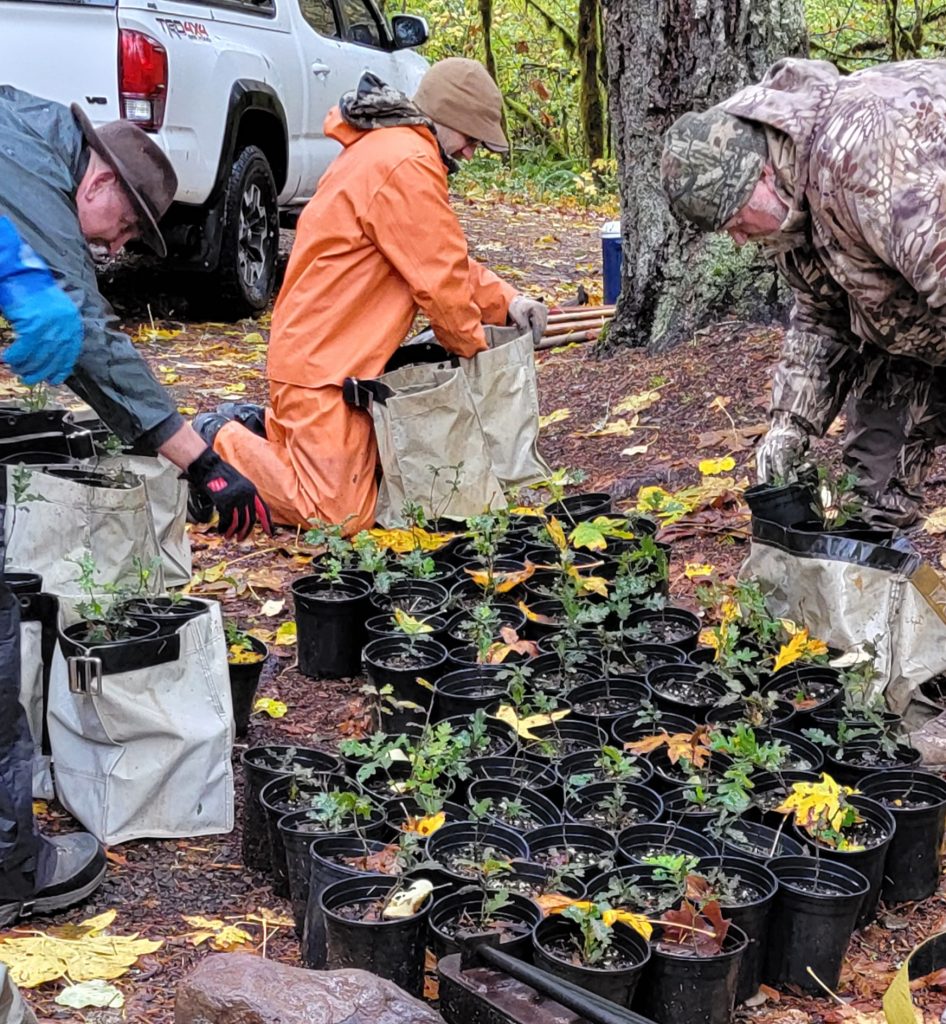Evergreen State Volunteers Plant Thousands of Native Plant Species for Wildlife
Rain or shine, volunteers from conservation groups and agencies roll up their sleeves for the good of the cause.
Volunteers from the USDA Forest Service, the NWTF, the Washington Department of Fish and Wildlife and the Cascade Forest Conservancy recently hiked into the Gifford Pinchot National Forest to plant native plant species for wildlife in the Wind River area, near Skamania County.

The work site was previously inundated with invasive plant species, primarily Canada thistle, an allelopathic plant, meaning that it secrets chemicals from its roots that adversely affect surrounding vegetative species.
Managers took a two-pronged approach to enhance the area for wildlife – eliminate the bad species and plant some good ones.
After the herbicide treatments led by the Skamania County Noxious Weed Board, planting vegetation that enhances habitat and promotes biodiversity was in store for the upcoming fall.
“The majority of the plants that were planted were white oak,” said Krista Modlin, NWTF district biologist for California, Oregon and Washington. “White oak is an excellent source of food for a number of wildlife species, such as elk, deer, bear, turkey and many others. This area is also classified as winter range habitat for a variety of these big game species, so providing these food sources is crucial.”

Michelle Mcdonald.
Michelle Mcdonald.
The volunteers began their efforts in early October, planting some 500 plants in the national forest throughout the weekend. Local Forest Service wildfire engines assisted by helping water in the initial batch of plants, at least before they were off to fight more fires.
With still over a thousand plants left to get in the ground, another planting weekend was scheduled, and NWTF conservation staff and volunteers rallied the troops and helped the Forest Service put a bow on the project.
Russell McDonald, NWTF Washington State Chapter President and Forest Service electronic technician supervisor, described the NWTF grassroots efforts in the Evergreen State as small but mighty.
“Our volunteer group is small here in Washington, but we get the job done,” he said. “We did this project with six NWTF volunteers and six Forest Service employees. One thousand trees were planted in a day and a half. Also done in some really torrential rain. We all had a blast, and we cooked hamburgers and hotdogs for lunch when we finished.”
The Forest Service commended the NWTF’s volunteers and determination.
“A mixed bag of good folks braved the rain and wind to help get the remaining 1,000 plants into the ground,” said J. Conner England, USFS Forest Terrestrial Biologist. “I’d like to thank Russ, Michelle and Rich of the NWTF Washington State Chapter for rallying the troops, rolling up their sleeves and providing some nice, hot meals. Several members made a long drive to the Beaver Campground to plant in some rough conditions. I appreciate all the help and the work the chapter does.”

Michelle Mcdonald.
Michelle Mcdonald.
Despite the wind, rain and overall not-ideal conditions, volunteers averaged about 32 plants in the ground in an hour.
Across the country, the NWTF’s volunteer efforts for both conservation and hunting heritage projects are crucial to delivering the organization’s mission. To learn how you can enhance wildlife habitat or introduce people to hunting in your area, visit www.nwtf.org/get-involved/volunteers.
